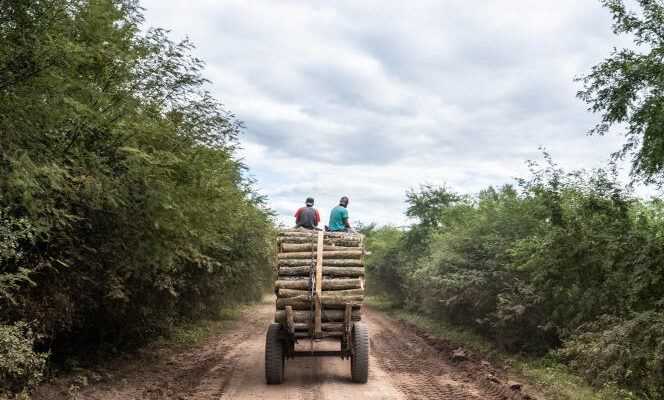Scathing, the sun beats down on a dusty dirt road traced between thick brambles, shrubs and, here and there, providing shade in the drought, quebrachos – tall South American trees with slender branches . On the side of the road, sometimes the corpses of cows rot in the heat: the animals, introduced by the few local peasants, succumbed before finding water, so rare in the forest called “the Impenetrable ”, because of this dry hostility. The Gran Chaco region embraces over 107 million hectares part of Argentina, Bolivia, Paraguay and a tiny teardrop of Brazil, in landscapes varying from humid abundance to semi-aridity. It is home to the second largest forest in South America, after the Amazon.
Here too, bulldozers have swallowed thousands of trees, contributing to deforestation, making it the second largest in number of hectares in Latin America after the Amazon basin, according to a report by the NGO Greenpeace, in 2019. L The Food and Agriculture Organization of the United Nations (FAO) ranks Paraguay, Argentina and Bolivia among the ten countries with the most deforestation between 2010 and 2015. Brazil occupies the first place. According to the MapBiomas collaborative project, of which the World Wide Fund for Nature (WWF) is a member, the Gran Chaco lost 8.7 million hectares between 2000 and 2019.
On the Argentinian side, 80% of deforestation is concentrated, according to Greenpeace, in four northern provinces: Salta, Santiago del Estero, Formosa and Chaco, the latter being the region which has retroceded its forest the most between 2016 and 2019 (more than 130 000 hectares lost, according to the NGO). While the rate of deforestation has been decreasing since 2009, it continues to wreak havoc. “Even during confinement in 2020, [elle] continued “, notes Hernan Giardini, coordinator within Greenpeace, who notes the loss, half illegal, of more than 13,000 hectares in the Chaco in 2020.
Advancement of large-scale agriculture and animal husbandry
On the satellite map in which Natay Collet, member of the Somos Monte environmental defense collective, immerses himself (“We are the forest”), vast white spots drawn with a line stand out from the green immensity. “You can see all the deforestation in the province of Salta [à l’extrême nord-ouest du pays] and this immense rectangle, 19 kilometers long ”, she explains, from her desk.
This “rectangle” is visible after 180 kilometers of dirt road in the “Impenetrable”, hidden at human height by a ” curtain “ of trees. “This allows people who deforest to conceal the area when passing on the road, but it does not escape satellite images”, explains Natay Collet. At the bend of a more remote path, after passing cacti with orange or yellow flowers and carob trees, you can see the bald earth as far as the eye can see.
You have 82.21% of this article to read. The rest is for subscribers only.
